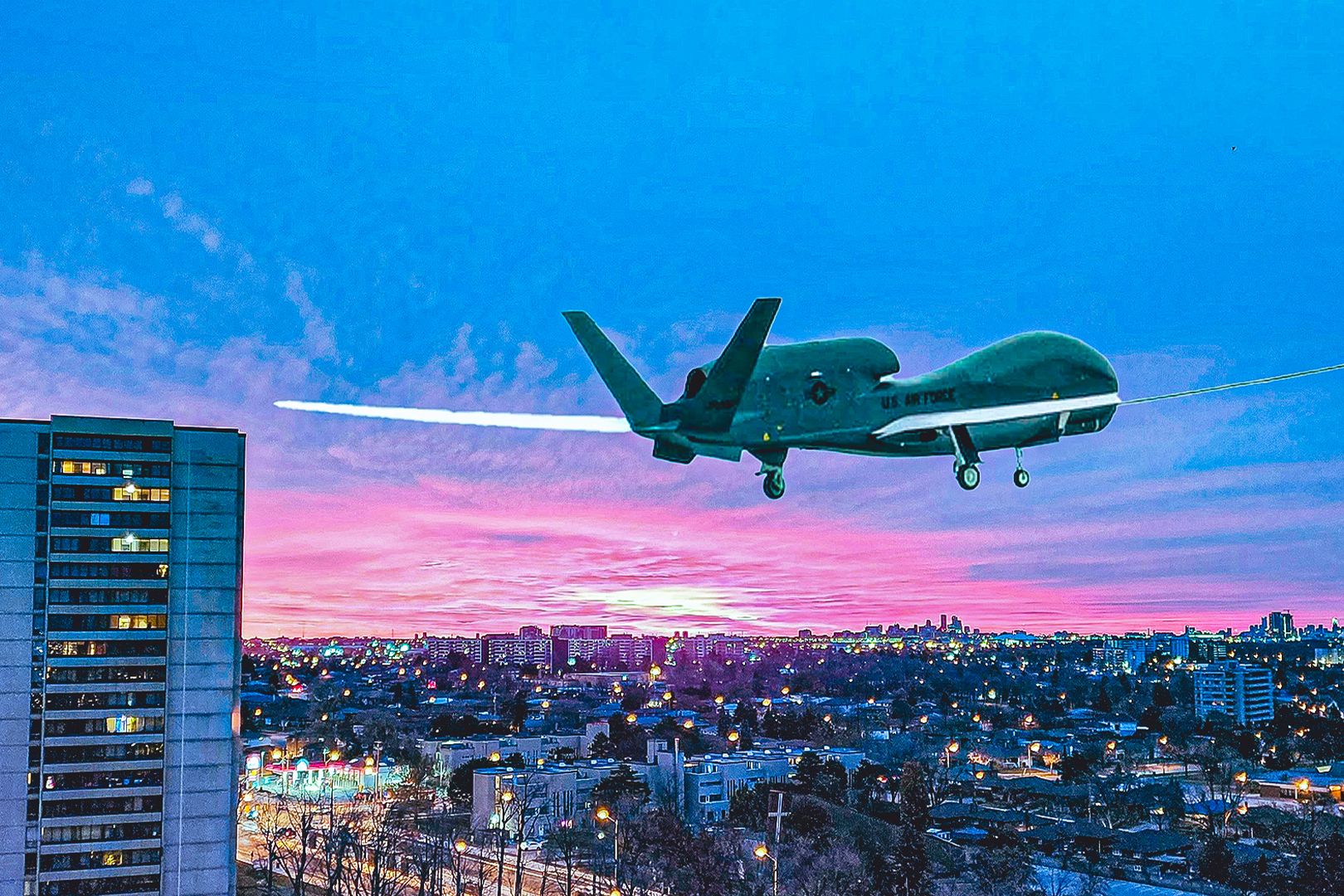Summary The Northrop Grumman RQ-4 Global Hawk assists the US Air Force and NATO with ISR missions, although it does not have offensive capabilities. The drone has covered missions in Afghanistan, Iraq, Libya, and Ukraine, proving its worth in global conflicts. Enlisted pilots fly the Global Hawk, the only USAF aircraft to have enlisted troop pilots since 1957.
When it comes to US military unmanned aerial vehicles (UAVs), chances are the MQ-1 Predator and the MQ-9 Reaper (AKA "Predator B") are the first examples that come to mind, thanks to the deadly drone strike missions that it performed during the Global War On Terror (Afghanistan and Iraq alike). For better or worse, military drones are here to stay. Simple Flying examines the five that are proving most impactful.

Learn more about the MQ-9 Reaper . However, another UAV has proven invaluable to US Air Force and NATO missions, even if it might not be as well-known. Simple Flying now takes a new look at the Northrup Grumman RQ-4 Global Hawk.
The Northrop Grumman RQ-4 Global Hawk is an RPA with a range of more than 14,000 miles and can stay in the air for more than a day. RQ-4 early history and specifications The RQ-4 made its maiden flight on February 28, 1998, and officially entered operational service in November 2001 (great timing, as this was barely two months after the 9/11 attacks and the resultant kickoff of GWOT). As of fiscal year 2013 (FY2013), 42 airframes had been built.
Developed from Northrop Grumman's MQ-4C Triton, it has the following specifications: Fuselage Length: 47 ft 7 in (14.5 m) Wingspan: 130.9 ft (39.
9 m) Height: 15.3 ft (4.7 m) Empty Weight: 14,950 lb (6,781 kg) Gross Weight: 32,250 lb (14,628 kg) Capacity: 3,000 lb (1,360 kg) Max Airspeed: 391 mph (629 km/h, 340 kn) Cruise speed: 357 mph (570 km/h, 310 kn) Powerplant: 1 × Rolls-Royce F137-RR-100 turbofan engine, 7,600 lbf (34 kN) thrust Range: 14,200 mi (22,800 km, 12,300 nmi) Service Ceiling: 60,000 ft (18,000 m) Armament is conspicuous by its absence because, unlike the Predator and the Reaper, the Global Hawk doesn't play an offensive role (the "predatory" Hawk moniker notwithstanding).
So then, how does it perform in high-threat environments? Global Hawk GWOT missions The Global Hawk may not unleash missiles, rockets, or bombs upon the bad guys, but it helps detect them. As the official US Air Force Fact Sheets elaborate: "The RQ-4 Global Hawk is a high-altitude, long-endurance, remotely piloted aircraft with an integrated sensor suite that provides global all-weather, day or night intelligence, surveillance and reconnaissance (ISR) capability. Global Hawk's mission is to provide a broad spectrum of ISR collection capability to support joint combatant forces in worldwide peacetime, contingency and wartime operations.
The Global Hawk provides persistent near-real-time coverage using imagery intelligence (IMINT), signals intelligence (SIGINT) and moving target indicator (MTI) sensors." " Eighteen Block 30s [were] currently [as of October 2014] fielded, supporting every geographic combatant command as well as combat missions in Operations Enduring Freedom and Iraqi Freedom/ New Dawn. Block 30s also supported Operation Odyssey Dawn in Libya.
" The Block 40 iteration carries the Radar Technology Insertion Program (RTIP), an active electronically scanned array radar that provides MTI and synthetic aperture radar (SAR) data. The Block 30 RQ-4s attained initial operating capability (IOC) in 2011, while the Block 40 Global Hawks attained IOC in 2015. The aircraft is capable of high-altitude, long-endurance ISR missions.
Missions over Ukraine Afghanistan, Iraq, and Libya aren't the only global hot spots wherein the Global Hawk has proved its worth. NATO has also used these drones more recently to assist Ukraine in its fight against Russia and Vladimir Putin's seemingly never-ending "special military operation" (which has dragged on for two and a half years now). According to an October 2023 report in Warrior Maven by Kris Osborn, President of the Center for Military Modernization: "US Air Force RQ-4 Global Hawk drones and other NATO surveillance assets have been circling within surveillance range of the Crimean Peninsula and other parts of Southern Ukraine from the Black Sea as a way to find, transmit or 'light up' targets of great significance for Ukrainian forces to attack.
" "A recent specific incident involving a US Air Force Global Hawk drone near Crimea introduces key points of analysis regarding the continued utility of larger, less-stealthy drones such as the Global Hawk or its maritime variant the Triton. The Russian Ministry of Defense announced that it sent one of its Su-27s to confront and 'repel' or turn back a US Air Force Global Hawk over the Black Sea within range of Crimea, a situation discussed in a Warrior essay by Managing Editor Mark Episkopos." In June, US Civil Defense News (@CaptCoronado) posted on X ( formerly Twitter) a claim that Russian air defense forces had shot down an RQ-4 over the Black Sea.
However, according to CheckYourFact , the US government denies this claim, and the Russian Defense Ministry has not claimed any such credit either. As an interesting side note, the Global Hawk is currently the only US Air Force aircraft that enlisted pilots are flying ; this signifies the first time since 1957 that the USAF has allowed enlisted troops to serve as pilots)..



















